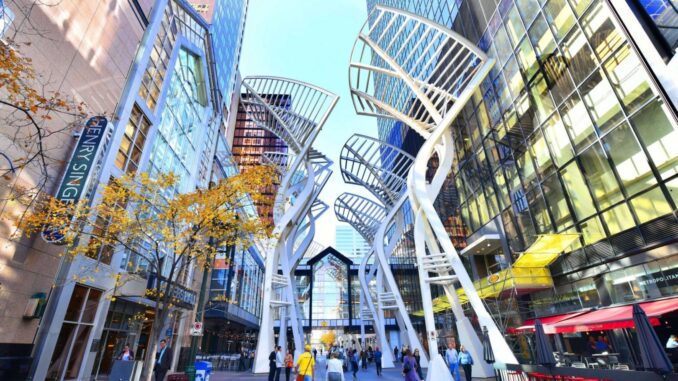
TORONTO, June 23, 2022 /CNW/ – It’s finally happening. Canada’s commercial real estate sector is poised to bridge from pandemic reality to our next normal. To make the very most of this next phase in our industry, organizations will need to tie strategic direction into the real needs, of real Canadians, more closely than ever before.
The last two years haven’t just changed the way we work, shop, learn and interact. They’ve changed people, full stop. Hybrid work models are here to stay. Most employees say they’ll move on from an organization if not given the flexibility they desire. That flexibility spans a wide range of employee preferences—from where and when they work, to the amenities most likely to attract and retain talent. Consumer attitudes around what people actually need (or are willing to give up) and how they access those purchases has shifted, too. That includes 56% who say they’re less likely to go out now unless they have to. At the same time, we’re craving human interaction in ways virtual and remote options simple don’t allow for. By December 2021, 85% of holiday shoppers said they’d be returning to shopping centres and spending more time (and money) in malls. Logic dictates: when the very clients and customers who populate offices, stores, and other types of commercial venues change, the way we target our offerings to them must also transform.
Across the industry, we need new strategies capable of balancing these evolved preferences. Deepening your understanding of what these changes mean, and adapting accordingly, can help commercial assets remain—or become increasingly—relevant as time goes on. Putting humans at the centre of your plans can align your offerings and portfolio to today’s reality in meaningful and profitable ways.
Thinking through these key questions now can be a good way for commercial real estate leaders to dig into that process, understand how stakeholders have transformed, and marshal that insight into solid strategic planning for the long and short term:
- How do our properties enable the human connections and experiences people are craving as restrictions loosen, and people re-enter the world? Individual comfort levels will play a huge part in the return to offices. We can anticipate a broad spectrum of preferences beyond work models, spanning areas like entertainment, restaurants, and more. Looking at the purpose of your properties, the experiences that they offer to its users, and how they enable connection points while underpinning safety is key. People are hungry for socialization. Cater to that by developing properties that bring families, friends, colleagues and peers together in the ways they’re seeking next.
- Where are the opportunities to build for an inherently hybrid future? Multipurpose is going to be absolutely critical in a post-pandemic commercial real estate market. Properties, or even collections of properties, that allow physical space and virtual connectivity in one location will enable tenants to bring an important duality to their brands. Consider how your assets can address that reality proactively through new services, offerings, designs, layouts and more. Collaborating with tenants to realize those opportunities can help, too.
- Are we diversifying our portfolio based on today’s changed reality? Many of the executives we speak to credit their success over the last two years to the fact that they’d already rebalanced their portfolios, pre-pandemic. That diversity of assets enabled leaders with more ways to capitalize on shifting client and consumer perceptions, all while mitigating risk. If you haven’t already looked at your existing assets through the diversification lens, start now. Rest assured: this doesn’t need to entail wholesale change. It could mean venturing into new assets that allow you to tap emerging market hot spots (think logistics, home delivery, fulfillment, etc.). At the same time, it could be as straight-forward as reviewing your existing assets and daring to ask: what purpose could this space serve in our new world? Get curious about your own space, and the ways it might evolve alongside with new stakeholder expectations.
- Do we have the right people in place to spark truly innovative solutions? Traditional thinking provides invaluable context. Bolstering those in-house abilities with additional skillsets to help you develop new concepts, ideas and plans is also important. Whether that means bringing in data scientists to get greater clarity on who is using your space, how, when and why—or bringing in environmental, social and governance (ESG) specialists to move your sustainability efforts to the next level: there’s a lot to think about. Align your business plans and talent strategy to ensure you’re pulling the right mix of people and perspectives to the table, and building a diverse chorus of voices ready to move your organization forward
Bottom line? A new normal requires a new direction. And commercial real estate players willing to boldly connect what they do next with what stakeholders want now stand to gain.
SOURCE EY (Ernst & Young)

Leave a Reply